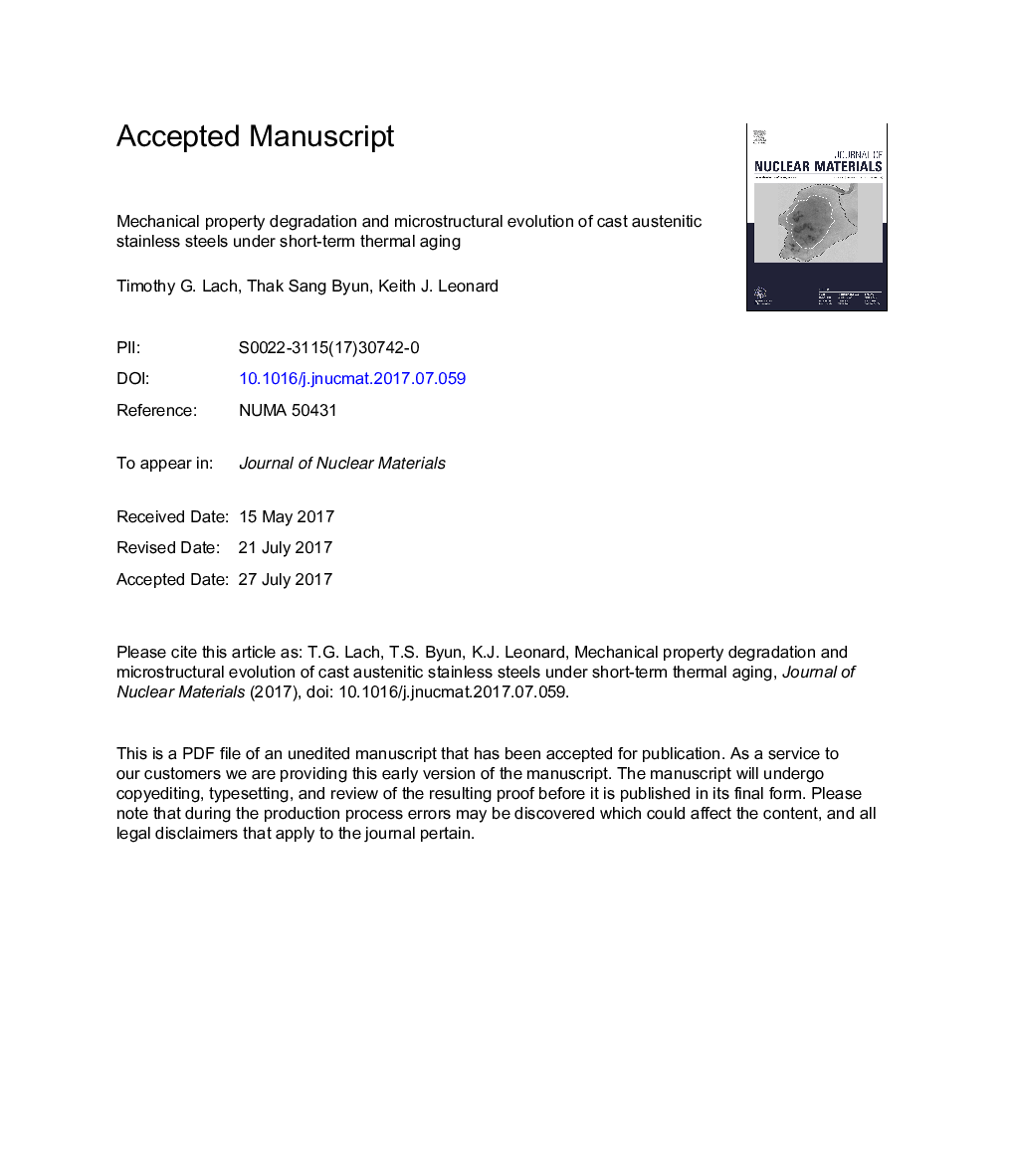| Article ID | Journal | Published Year | Pages | File Type |
|---|---|---|---|---|
| 7963618 | Journal of Nuclear Materials | 2017 | 27 Pages |
Abstract
Mechanical testing and microstructural characterization were performed on short-term thermally aged cast austenitic stainless steels (CASS) to understand the severity and mechanisms of thermal-aging degradation experienced during extended operation of light water reactor (LWR) coolant systems. Four CASS materials-CF3, CF3M, CF8, and CF8M-were thermally aged for 1500 h at 290 °C, 330 °C, 360 °C, and 400 °C. All four alloys experienced insignificant change in strength and ductility properties but a significant reduction in absorbed impact energy. The primary microstructural and compositional changes during thermal aging were spinodal decomposition of the δ-ferrite into α/αâ², precipitation of G-phase in the δ-ferrite, segregation of solute to the austenite/ferrite interphase boundary, and growth of M23C6 carbides on the austenite/ferrite interphase boundary. These changes were shown to be highly dependent on chemical composition, particularly the concentration of C and Mo, and aging temperature. The low C, high Mo CF3M alloys experienced the most spinodal decomposition and G-phase precipitation coinciding the largest reduction in impact properties.
Related Topics
Physical Sciences and Engineering
Energy
Nuclear Energy and Engineering
Authors
Timothy G. Lach, Thak Sang Byun, Keith J. Leonard,
